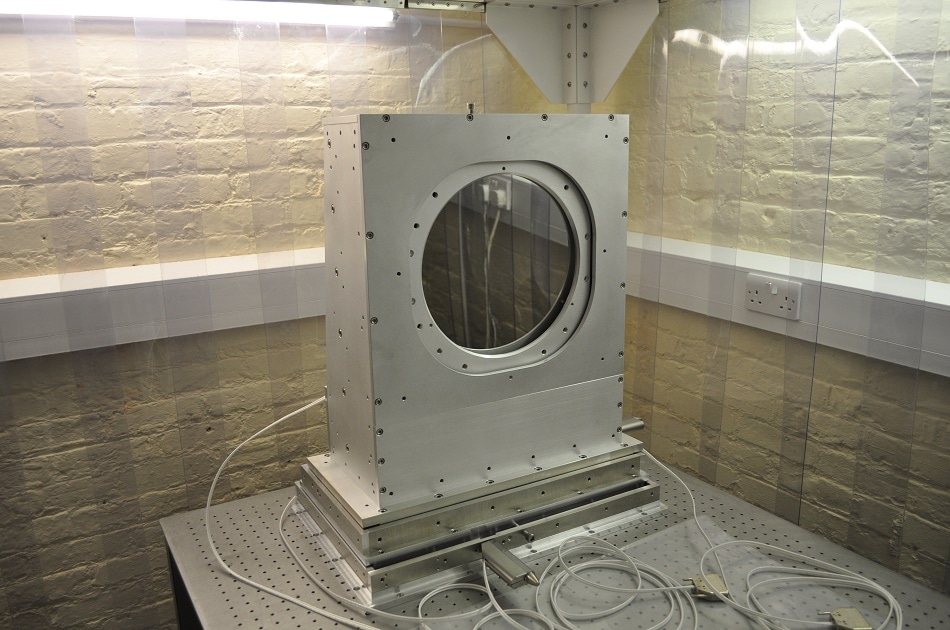Optical Surfaces Ltd. has received an order from Strathclyde Intense Laser Interaction Studies (SILIS) Group, from University of Strathclyde (UK) for three ultra-high performance off-axis parabolic mirrors in special custom vacuum motorised mounts.

The mounted mirrors to be developed by Optical Surfaces Ltd. will be used on several beamlines of the facilities 350TW laser which is designed to support an extensive research portfolio in laser-plasma physics and multidisciplinary applications, with an emphasis on radiation sources and healthcare applications.
The SILIS Group are one of the main collaborators of SCAPA (Scottish Centre for the Application of Plasma-based Accelerators), an £8M+ state-of-the-art research facility. SCAPA houses laser systems, including a 350 TW laser (5 Hz, 25 fs) and 40 TW laser (10 Hz, 35 fs), and three radiation shielded bunkers, which have space for up to 7 beamlines. Each beamline is uniquely designed to focus on a specific category of laser-plasma interactions and secondary sources. A variety of photon and particle beams will be produced at SCAPA and utilised for multi-faceted R&D ranging from fundamental research (e.g. ionisation and plasma effects) to advanced university-scale applications arising from plasma-based light sources such as free-electron lasers, betatron radiation and inverse Compton scattering.

Three SCAPA beamlines will use Optical Surfaces ultra-high precision off-axis parabolic mirrors each manufactured with different focal lengths. The first one, produced with a long focal length (2000 mm), aims at investigating acceleration of high-quality electron and X-ray beams via underdense plasma and high intense laser interaction. The second one uses a pair of off-axis parabolic mirrors (1000 mm) as part of double plasma mirrors system to further enhance the contrast of the 350 TW SCAPA laser system. The third beamline, which uses the shortest focal length (210 mm) off-axis parabolic mirror, will be dedicated to the investigation of ultrahigh contrast, ultra intense laser-plasma interactions. This will facilitate research into the development and application of laser-driven ion beams.
Operating in a uniquely stable manufacturing environment – Optical Surfaces’ skilled production team is able to routinely produce precision off-axis parabolic mirrors that enable intense laser facilities to conduct ground-breaking research.
Dr Grace Manahan, a SCAPA and SILIS Group research associate said "In all of the beamlines, the quality of the produced/accelerated particles (electrons or ions) and X-ray radiation is highly dependent on the quality of the focus spot produced by the off-axis parabolas. This means that as the high-power laser beam propagates onto the parabola, it should experience virtually no wavefront distortion so that the focus spot is high quality (i.e. no astigmatism or distortion). The surface quality of the off-axis parabolic mirrors and the level of stability provided by their mountings are of vital importance in our supplier selection processes.
Dr Manahan added “We selected Optical Surfaces Ltd because we have colleagues that have already used their optics and their high recommendation gave me confidence on the quality we could expect. In addition, Optical Surfaces Ltd. were the only company that accommodated my series of modification requests and they accepted the challenges of manufacturing these challenging customised optics. During the whole selection process, though particularly in the design of a mirror mount that would be both vacuum compatible and motorised, we were delighted with the support provided by Optical Surfaces Ltd.”
Professor Dino Jaroszynski, Director of SCAPA, said “We are thrilled to have chosen very high quality components for optical setup. This will ensure good stability and reproducibility in experiments. Users will benefit with being able to undertake both long-term, systematic, experiments and shorter term exploratory experiments, which will give them the advantage of establishing good lines of research and pursuing their dreams with follow-on research that yields high impact results. SCAPA will be used by a broad range of users that are developing and applying radiation sources based on high power lasers.”